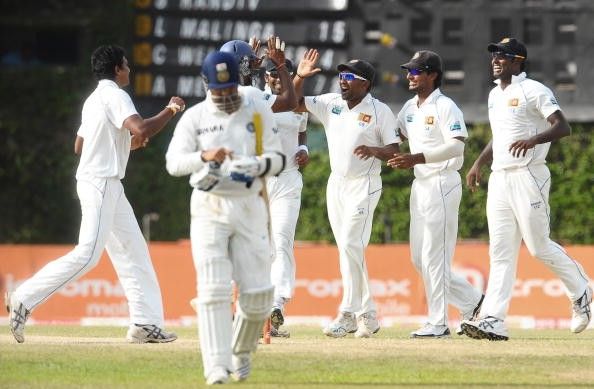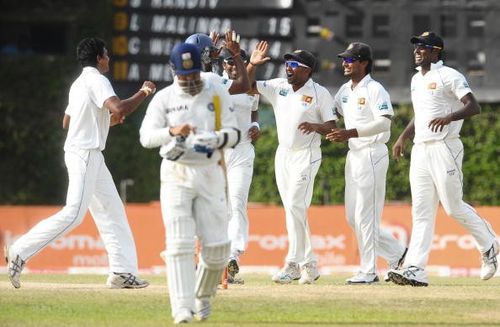
Let us play cricket more fairly - A plea to correct the balance between bat and ball

Cricket is indeed the Gentleman’s Game; cricket, really, is the religion of a few regions and cricketers are hailed as Gods. The governors – the Marylebone Cricket Club (MCC) and International Cricket Council (ICC) – have demanded exemplary sportsman spirit – and rightly so – from all men and women donning their country’s colours as well as endeavouring at the domestic level to break into the national team. The loud slogan has been ‘Play Hard, Play Fair’.
And while there is undoubtedly no dearth of the hardness – rather aggressiveness – prevailing in play today, what the administrators have unexpectedly bypassed is the latter part of it – the equality. There is, simultaneously, parity absent between batsmen and bowlers.
Beginning – unbiased – with the hands rolling the red and white cherry, post the unpredictable response that the inaugural T20 World Cup in 2007 gathered, Haroon Lorgat’s ICC introduced the concept of a free hit on all front foot no-balls in limited overs cricket, as against the T20 format only. The responsible men should have been immediately quizzed if any bowler would wilfully cross the line to donate extra runs – whichever be the format – besides taking a solemn walk and sprint back to bowl again, particularly so, given a fast bowler.
Next, he is causelessly penalised when his team’s fielder optionally launches an evitable throw at the stumps, resulting in an overthrow. The striker pockets it quietly, as the other lad is docked unfairly. Arguably, if the batsmen’s bag of runs excludes leg-byes and byes, thus culminating into extras, then overthrows may as well stand in the same queue.
Continuing in the same vein, not long ago, there was an amendment which allowed bowlers two bouncers an over, one more than what was previously permitted. Grievously, most umpires call the first as wide, ironically before signalling it as first bouncer. Horrendous, considering majority of the umpires are veterans in their business to know of the limited, unappealing line separating a head-high delivery from a bouncer; and two different decisions for the same ball resembles two hits at one go.
Lessons learnt from 2015
Pressing on, the detectable caution adopted by the on-field umpires since the advent of the DRS is appreciable. But a recent trend creeping and crawling into their minds is the rechecking – after initially approving – the legitimacy of a delivery after a dismissal. And superiority has more no-balls than none. As the fielding team parties around, the ‘dismissed’ batsman is held on by the umpire at the striker’s end, while the latter signals to his TV companion for a replay.
Brutality is rubbed on the bruise, as technology is misused to rectify errors. The ICC must stamp its authority right here and prevent such practices by notifying the umpires, as a batsman being called back might ultimately prove to be the turning point of the match. Such faults, like the ones where a batsman is wrongly adjudged as dismissed – or falsely ruled not out – must be accepted by both teams and proceeded with, as the umpires are, but humans averse to oversight.
Further, they said the ICC World Cup of 2015 held on either side of the remote Tasman was the most successful of its kind in forty years of history. The arch-rival clash between Asian neighbours India and Pakistan followed the last edition’s final – also involving India and one of its adjacent countries, Sri Lanka – as the most-watched cricket match on television. They also agreed that bat dominated ball more than ever, with the map of statistics jumping like a rising frog to favour the willow. Batting blossomed with two double hundreds and three scores in excess of 400 – the Australian island had never seen even one before – were recorded.
The old debate of whether to allow only four fielders on the fence gained more momentum than David de Gea’s stay at – or leave from – Manchester United when the 2015-16 English Premier League season commenced. Ever since the rulers switched from five to four in October 2012, bowlers have been bashed around the world and nothing was new at the most prized tournament.
For twenty years until this nasty norm, five men patrolled the boundary during non-powerplay overs (though the powerplay laws trembled with time). An aggregate of ten totals in the quadruple hundred were recorded till the rule change, while very conceivably, 400 was breached six times only inside three years before the bosses woke up to realisation. The Proteas had twice before done so, but repeated it thrice in 2015 alone – including twice in the mega event – prior to modifications in June 2015 and once again after it.
The most disastrous ODI series ever played surely has to be when England hosted New Zealand in the summer of 2015. An ill-fancied 283 was the lowest total batting first, while the mean of all first innings scores zoomed to a baffling 348. A world-record sum of 3,151 runs were hammered at a premium run rate of 7.15, with the punches landing at a woefully wondrous 113.89 runs every 100 balls. As many as 76 sixes were smashed and the scoreboard recorded 400 on English soil for the first time after forty three years of ODI cricket in England.
Flaws in laws of batsmanship
Conclusively, all the drama dawned on the ICC when they fixed a few norms to be altered again. One of them was to grant the fielding team five fielders on the boundary and getting back to where ODI rules were until three Octobers ago. However, four was continued with, despite scrapping a powerplay and letting on an additional sweeper during the last ten overs. Another of such demands to shift powers back into the bowlers’ hands was to spread the boundary ropes back to the maximum. Alas, no result! The short boundaries continue to dominate most part of the grounds.
Finally – from the bowlers’ perspective – a benefit enjoyed by modern batsmen is that of two new balls from each end. It is no secret that the latest the cherry, the harder it is; the harder that it is, the more simply the bat can dispatch it. This too was given a miss at the June 2015 meeting, little visualising the dwindling effect of spin from the game. Tweakers are required to trade with the rigid ball, snatching from them their most handy sword – turn – especially on sub-continental pitches.
There is nothing that the willow can want in today’s One-day format. Yet, there are two tiny facets, fixing which may enable limited overs cricket to function finely. One, the deliveries faced by batsmen comprises all no-balls – whether front-foot or waist high – though they are otherwise invalid ones. Somebody on the brink of the quickest half-century, century or the like may overpass the record for this little flaw in the law.
Last, the constitution has it that if the striker is unbeaten on any score – including 99 – with one run to win and the bowler over steps, the runs off the bat are disregarded, with only the single off that illegal delivery tallying to make up the target. Absolutely no mind can put into oblivion the audacity Sri Lanka’s Suraj Randiv displayed on stepping over when former Indian opener Virender Sehwag was merely a single away from his hundred during the Galle ODI in 2010.
Randiv later claimed his teammate Tillakaratne Dilshan influenced him on performing such a heinous crime. Dilshan was let off with a deduction of 15% in his match fees, as Randiv turned out to be the loser with a one-match suspension.
The sooner that we look into such imbalances, the earlier that cricket becomes a fairer game to play. There will be no injustice to both fields of play, both parties will appear more appeased.
Let us play cricket more fairly.